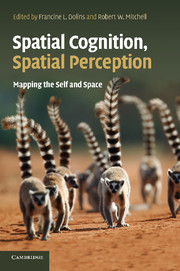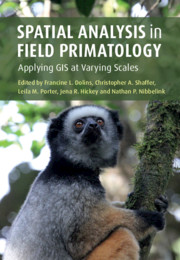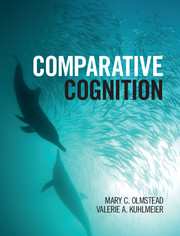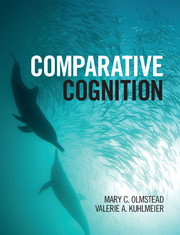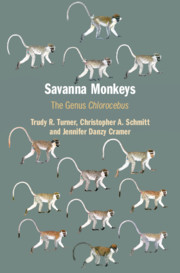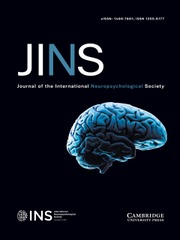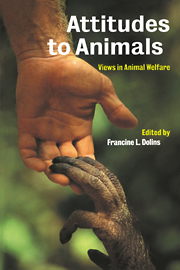Spatial Cognition, Spatial Perception
How does knowledge of the body in space relate to an understanding of space itself? Spatial cognition is discussed from two closely related perspectives: the internal mapping of external stimuli (e.g., landmarks and sensory perception of environmental information) and the internal mapping of internally perceived stimuli (e.g., kinesthetic and visual imagery), and their subsequent effects on behaviour. Clarification of what spatial information is present in most perceptual processes and how this is used cognitively in relation to the self in space is then established. Major points and controversies of the various models are discussed, along with evolutionary perspectives of spatial perception and object recognition and comparisons between human and non-human spatial cognitive abilities and behaviours. Written for postgraduate students and researchers, the authors present theoretical and experimental accounts at multiple levels of analysis - perceptual, behavioural and cognitive - providing a thorough review of the mechanisms of spatial cognition.
- Analyses all models of cognition and perception, presenting findings applicable to a variety of disciplines including biological anthropology, psychology and neuroscience
- Primates, humans and other species are discussed, allowing comparison to increase understanding of the processes
- With contributions from leading researchers in the field, providing an expert analysis of the cognitive and perceptual processes of spatial cognition
Product details
No date availablePaperback
9781107646230
606 pages
230 × 154 × 35 mm
1.84kg
Table of Contents
- Introduction 1. Linking spatial cognition and spatial perception F. L. Dolins and R. W. Mitchell
- Part I. What Do Animals Know and How Do They Represent External Space?:
- 2. Psychology and the philosophy of spatial perception: a history, or how the idea of spatial cognition in animals developed R. W. Mitchell and F. L. Dolins
- 3. Common principles shared by spatial and other kinds of cognition K. Cheng
- 4. To be buried in thought, lost in space or lost in action: is that the question? E. Menzel
- Part II. Perception and Memory of Landmarks: Implications for Spatial Behaviour and Cognition:
- 5. The encoding of geometry in various vertebrate species C. Thinus-Blanc, V. Chabanne, L. Tommasi, P. Peruch and J. Vauclair
- 6. The visually guided routes of ants T. Collett and P. Graham
- 7. The role of landmarks in small and large scale navigation S. D. Healy and V. A. Braithwaite
- 8. Examining spatial cognitive strategies in small-scale and large-scale space in tamarin monkeys P. A. Garber and F. L. Dolins
- 9. Spatial learning and foraging in macaques C. Menzel
- Part III. Evolutionary Perspectives of Cognitive Capacities in Spatial Perception and Object Recognition:
- 10. The evolution of human spatial cognition T. Wynn
- 11. Egocentric and allocentric spatial learning in the nonhuman primate L. Rehbein, S. Schettler, R. Killiany and M. Moss
- 12. Does the nature of cetacean perception make understanding object permanence unnecessary? R. W. Mitchell and E. Hoban
- 13. Multimodal sensory integration and concurrent navigation strategies for spatial cognition in real and artificial organisms A. Arleo and L. Ronde-Reig
- Part IV. Does Mapping of the Body Generate Understanding of External Space?:
- 14. Movement: the generative source of spatial perception and cognition M. Sheets-Johnstone
- 15. Understanding the body: spatial perception and spatial cognition R. W. Mitchell
- 16. The evolution of parietal areas involved in hand use in primates L. Krubitzer and E. Disbrow
- 17. Body mapping and spatial transformations S. H. Creem-Regehr
- 18. Understanding of external space generated by bodily re-mapping: an insight from the neurophysiology of tool-using monkeys A. Iriki
- 19. Left-right spatial discrimination and the evolution of hemispheric specialization: some new thoughts on some old ideas W. D. Hopkins and C. Cantalupo
- Part V. Comparisons of Human and Non-Human Primate Spatial Cognitive Abilities:
- 20. The geographical imagination R. Sambrook and D. Zurick
- 21. Of chimps and children: use of spatial symbols by two species J. DeLoache and M. Bloom
- 22. Chimpanzee spatial skills: a model for human performance on scale model tasks? S. Till Boysen and K. A. Bard
- 23. The development of place learning in comparative perspective A. Learmonth and N. Newcombe
- 24. Spatial cognition and memory in symbol-competent chimpanzees C. Menzel.

